Unifor National Executive Board unanimously (unconstitutionally?) voted to leave the CLC . This has caused a rift in the House of Labour and has rightfully gotten the activists of Unifor riled up, many of whom once belonged to a Regional Labour Council or Provincial Federation of Labour before this decision was made. As members of the Unifor Solidarity Network, we feel it’s important that you make your opinion heard directly to the NEB. We would also like to post your letters here as well, because we feel that this issue merits a full discussion with our members.
We call on all Unifor activists to stand against this undemocratic power move by our NEB, and to continue our important work at the grassroots while our leaders waste valuable time and energy at the top.
——————-
Good Morning,
My name is Mike Mutimer. I’m a member of Local 222 and as of yesterday, I was a delegate and Executive Member at Large for the Durham Region Labour Council.
I write to express my displeasure with the National Executive Board’s unanimous decision to immediately disaffiliate from the Canadian Labour Congress.
While I can understand the NEB’s frustration with the CLC and the lack of action in regards to the bullying tactics of US based unions, are we not engaging in our own bullying tactic by withholding our per captia as Canada’s largest private sector union? In your “Facts on Unifor’s disaffiliation from the CLC” article, you don’t clearly say that WE (as Unifor) are acting like bullies, however when you say things like “It is our hope that the action to disaffiliate from the CLC will trigger change to ensure that workers in Canada have their democratic rights respected”, one can clearly read between the lines.
You’re hoping by starving the CLC of our per capita, they will “trigger change”. If that’s not a bully tactic, I’m not sure what is. This effectively removes two million dollars from their budget.
Further more, it would appear NEB also acted in violation of our own Unifor Constitution which states in Article 19: Affiliations, Section 2 : Suspension or disaffiliation from the Canadian Labour Congress may be authorized by the National Executive Board subject to the approval of Convention, or the Canadian Council.
Reading through the resolutions of 2017’s Canadian Council, I don’t see any type of approval given to the NEB to act in this manner. This should have been approved by Canadian Council last year prior to this decision and not to be dealt with later this year.
I respectfully disagree that the NEB didn’t enter into this lightly. There has been conflicting messages in regards to affiliation to regional labour councils. If this was a well thought out decision, there would have been more discussion and especially with out members. This wouldn’t have been done during the middle of giant National Day of Action that has been put together by labour councils. The timing couldn’t be worse.
To conclude, I’m deeply disappointed by this action. It seems to be exactly the same type of bullying tactic that has been used in the past when unions didn’t get their way in the OFL and now Unifor is doing it to the CLC. There are better ways to resolve this issue than to remove the largest private sector union in the country from the House of Labour. It appears the NEB acted in violation of the Unifor Constitution Article 19 Section 2 that says suspension or disaffiliation from the Canadian Labour Congress can be authorized by the the NEB SUBJECT TO APPROVAL of Convention or Canadian Council, which was not gained during the last 2017 Canadian Council.
I really hope this decision is reversed as soon as possible.
In Solidarity,
Mike Mutimer
Unifor Local 222
——————-
Sisters and Brothers,
I’m writing to express my extreme displeasure with your recent unanimous decision to end our affiliation with the Canadian Labour Congress. The impact of this decision will have untold consequences for labour councils across the country and has absolutely embarrassed us in front of the broader labour community.
If we are truly concerned about democracy, why was this decision carried out behind close doors on an executive level without any mandate from our membership? Why would our National President release a statement urging our continued participation in regional labour councils when Section 7 of the CLC constitution very expressly prohibits our continued participation?
I am very aware of the situation with Unite Here Local 75 and the gross abuse of power and process they face at the hand of the UH International. I fully respect and support their right to self-determination as I have and will always place local union autonomy above all other union authority, however if it is self-determination we are truly seeking for these workers, would it not have sufficed to provide assistance for their highly capable, experienced, and engaged membership in the pursuit of their own independent direction instead of raiding their members and making Unifor the mockery of the Canadian labour movement?
We are in a watershed moment as labour fights to defend the gains made under Bill 148, and we desperately need to organize service sector workers. Instead though, we will wind up wasting enormous sums of our dues both engaging in and defending against raids without protection under Article 4 of the CLC. Hundreds of our most dedicated labour activists have now been plucked from both leadership and rank & file roles within the regional councils, effectively tearing apart both their funding and capacity in some instances. These councils are the lifeblood of the labour movement and your decisions have done immense harm to not only the councils but to the public image of unions in general which are routinely painted as greedy and only interested in securing dues. Consequently, it will take years to mend the mistrust that has now been sewn between Unifor and the rest of the unified labour movement.
This power move has come at such a grossly inopportune time, and has been carried out in such a callous and unthinking way that I question both the vision and intention of the primary motivators of this decision. With all of this said, I hope for the speedy and tactful rectification of this completely avoidable situation, and have faith in the ability of those on the NEB who recognize the true depth of this transgression against a united Canadian labour movement.
Very sincerely,
Cory E. Weir
Unifor Local 222 – Member

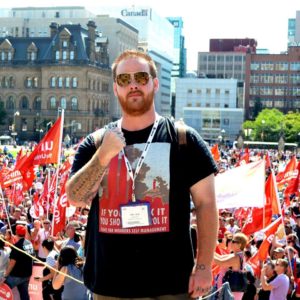


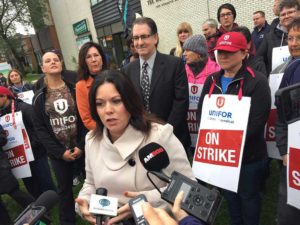

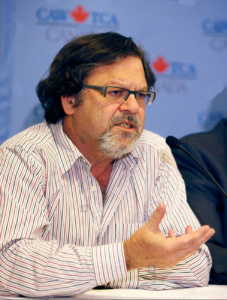
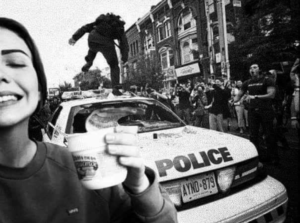

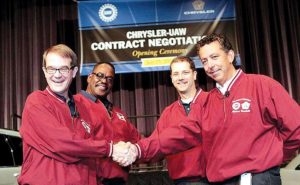
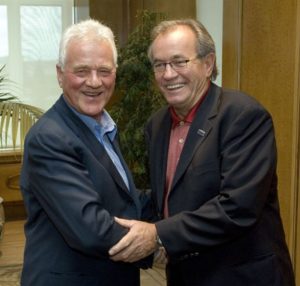
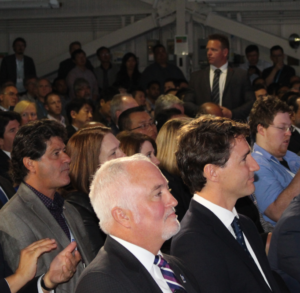
 Talking Radical Radio, hosted by Scott Neigh, has done a feature on the Unifor Solidarity Network:
Talking Radical Radio, hosted by Scott Neigh, has done a feature on the Unifor Solidarity Network:
